-

Feb
03
Interpretive Summary: Grass-fed vs. grain-fed beef systems: Performance, economic, and environmental trade-offs
.png?sfvrsn=d97a4cd1_0)
Between the influence of the “food elite” on social media and increasing public concerns over climate change, consumer demand for grass-fed beef has increased considerably. Although many consumers perceive grass-fed beef as more environmentally friendly than grain-fed beef, there is a dearth of research available to address these consumer claims.
Read more
-

Feb
03
Interpretive Summary: Weinroth Best Practices Animal Science 16S RNA profiling summary

The recent development of 16S rRNA gene sequencing as a method to identify microbes that live on various surfaces of the body, particularly in the gastrointestinal tract, has revolutionized the field of microbiology, and has resulted in an explosion of publications focusing on the microbiome of many species.
Read more
-

Feb
03
Interpretive Summary: Impact of forage diversity on forage productivity, nutritive value, beef cattle performance, and enteric methane emissions
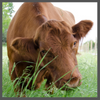
In recent years the beef industry has been targeted as a primary contributor to global warming. More specifically, this includes methane (CH4) production from the grazing sector, and therefore, researchers are working to mitigate the CH4 production in grazing environments.
Read more
-

Feb
03
Interpretive Summary: Gene expression in the amygdala and hippocampus of cyclic and acyclic gilts
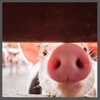
Reproductive failure affects up to 30% of replacement gilts, causing a massive reduction in profitability for a producer. More specifically, there are two types of prebreeding anestrus that cause reproductive failure, including the delay in attaining puberty (prepubertal anestrus, PPA) or silent ovulation (behavioral anestrus, BA).
Read more
-

Jan
27
John Deere Releases First Autonomous Tractor
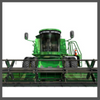
John Deere, the agricultural manufacturing company, revealed its first autonomous tractor for large-scale production use. The company states the invention is a way to helper farmers and ranchers who are challenged to produce more with less land.
Read more
-

Jan
27
World Food Prices Increase 28% in 2021

“While normally high prices are expected to give way to increased production, the high cost of inputs, ongoing global pandemic and ever more uncertain climatic conditions leave little room for optimism about a return to more stable market conditions even in 2022, ” said FAO Senior Economist Abdolreza Abbassian.
Read more
-

Jan
27
USDA Increases Funds for School Meals
.png?sfvrsn=8b624cd1_0)
The United States Department of Agriculture (USDA) announced $750 million in funding to school meal programs. The allocations are said to be an adjustment in school meal reimbursements to help schools, counter the supply chain problems, and inflation.
Read more
-

Jan
27
2022 Food Trends Released by IFIC
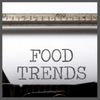
Americans are focused on wellness through nutrition according to the survey, citing the global pandemic as a possible cause. IFIC states that Americans are interested in specifically whole grains, fiber, and protein. Additionally, the average American’s knowledge of the Dietary Guidelines for Americans (DGA) has doubled over the past decade.
Read more
-

Jan
27
New Survey Finds Reduced Stigma Around Mental Health in Farmers

In encouraging news, a recent poll from the American Farm Bureau Federation (AFBF) indicates that farmers and those living in rural areas are more comfortable talking about stress and mental health.
Read more
-

Jan
27
Global Roundtable for Sustainable Beef Announces Executives

The Global Roundtable for Sustainable Beef (GRSB) has announced its 2022 Executive Committee. GRSB will focus on progressing the organization’s work towards achieving net-zero through its global sustainability goals.
Read more
-

Jan
27
Biden Admin Releases Meat Action Plan

The Biden Administration has released an action plan aimed to invest $1 billion to expand competition in the U.S. meatpacking industry and strengthen enforcement of antitrust laws.
Read more
-

Jan
27
US Successful in Dairy Lawsuit with Canada
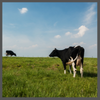
A USMA panel agreed with the United States that Canada is infringing on its USMCA commitments by reserving most of the in-quota quantity in its dairy tariff-rate quotas for the use of Canadian processors exclusively. The decision is not only a win for the U.S. but also for U.S. dairy farmers.
Read more
-

Jan
20
Interpretive Summary: Characterizing the effect of incrementally increasing dry bulb temperature on linear and nonlinear measures of heart rate variability in nonpregnant, mid-gestation, and late-gestation sows
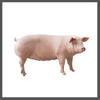
Pregnant pigs may be at a higher risk of poor physiological outcomes due to heat exposure compared to mature female pigs that are not pregnant. The purpose of this study was to evaluate the stress response of pregnant pigs to increasing environmental temperatures using heart rate variability, a noninvasive measure commonly used to evaluate the physiological stress response.
Read more
-

Jan
20
Interpretive Summary: Effect of bupivacaine liposome suspension administered as a local anesthetic block on indicators of pain and distress during and after surgical castration in dairy calves
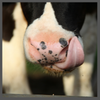
Castration is a routine procedure performed on beef and dairy operations in the United States. All methods of castration cause pain. The American Veterinary Medical Association and the American Association of Bovine Practitioners recommend that anesthesia and analgesia be administered during castration.
Read more
-

Jan
20
Interpretive Summary: Integrated multiple transcriptomes in oviductal tissue across the porcine estrous cycle reveal functional roles in oocyte maturation and transport
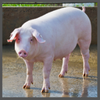
Understanding the swine female reproductive system is important for solving issues related to reproductive failure and litter size. The oviduct is the site of fertilization. After fertilization, the fertilized egg moves to the uterus for implantation.
Read more
-

Jan
20
Interpretive Summary: Impacts of polyclonal antibody preparations from avian origin as a feed additive to beef cattle: immune responses during the step-up transition diets
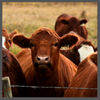
Acidosis in feedlot cattle is common, especially during the transition period from high forage to a grain-heavy diet. Nutritionists are consistently looking for alternatives to mitigate the adverse effects associated with this transition.
Read more
-

Jan
20
Interpretive Summary: Factors associated with bovine respiratory disease case fatality in feedlot cattle
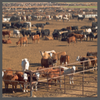
Bovine respiratory disease (BRD) is the cause of 60- to 90% of morbidity and mortality cases in feedlot cattle. Suppose factors associated with an animal first identified with BRD that is also associated with increased mortality risk could be identified.
Read more
-

Jan
13
Interpretive Summary: Effects of a blend of essential oils, medium-chain fatty acids, and a toxin-adsorbing mineral on diarrhea and gut microbiome of weanling pigs experimentally infected with a pathogenic Escherichia coli
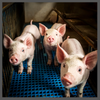
This experiment aims to investigate an antimicrobial blend consisting of essential oils, medium-chain fatty acids, and a toxin-adsorbing mineral on diarrhea, growth performance, and gut microbiome of newly weaned pigs experimentally infected with a pathogenic Escherichia coli (F18 E. coli).
Read more
-

Jan
13
Interpretive Summary: Effects of postweaning supplementation of immunomodulatory feed ingredient on circulating cytokines and microbial populations in programmed fed beef heifers
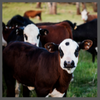
With consumers wanting less antibiotic usage in cattle production, the need for natural feed ingredients that have positive effects on animal health are needed.
Read more
-

Jan
13
Interpretive Summary: Varied diets: implications for lamb performance, rumen characteristics, total antioxidant status, and welfare

In today’s production settings, ruminants are provided monotonous feeding environments that do not allow the animals to make feed choices. The objective of the current study was to provide a varied diet of fresh forages (perennial ryegrass, plantain, alfalfa, and chicory) over the day.
Read more
 FebInterpretive Summary: Grass-fed vs. grain-fed beef systems: Performance, economic, and environmental trade-offs
FebInterpretive Summary: Grass-fed vs. grain-fed beef systems: Performance, economic, and environmental trade-offs.png?sfvrsn=d97a4cd1_0) Between the influence of the “food elite” on social media and increasing public concerns over climate change, consumer demand for grass-fed beef has increased considerably. Although many consumers perceive grass-fed beef as more environmentally friendly than grain-fed beef, there is a dearth of research available to address these consumer claims.
Between the influence of the “food elite” on social media and increasing public concerns over climate change, consumer demand for grass-fed beef has increased considerably. Although many consumers perceive grass-fed beef as more environmentally friendly than grain-fed beef, there is a dearth of research available to address these consumer claims. FebInterpretive Summary: Weinroth Best Practices Animal Science 16S RNA profiling summary
FebInterpretive Summary: Weinroth Best Practices Animal Science 16S RNA profiling summary The recent development of 16S rRNA gene sequencing as a method to identify microbes that live on various surfaces of the body, particularly in the gastrointestinal tract, has revolutionized the field of microbiology, and has resulted in an explosion of publications focusing on the microbiome of many species.
The recent development of 16S rRNA gene sequencing as a method to identify microbes that live on various surfaces of the body, particularly in the gastrointestinal tract, has revolutionized the field of microbiology, and has resulted in an explosion of publications focusing on the microbiome of many species. FebInterpretive Summary: Impact of forage diversity on forage productivity, nutritive value, beef cattle performance, and enteric methane emissions
FebInterpretive Summary: Impact of forage diversity on forage productivity, nutritive value, beef cattle performance, and enteric methane emissions In recent years the beef industry has been targeted as a primary contributor to global warming. More specifically, this includes methane (CH4) production from the grazing sector, and therefore, researchers are working to mitigate the CH4 production in grazing environments.
In recent years the beef industry has been targeted as a primary contributor to global warming. More specifically, this includes methane (CH4) production from the grazing sector, and therefore, researchers are working to mitigate the CH4 production in grazing environments. FebInterpretive Summary: Gene expression in the amygdala and hippocampus of cyclic and acyclic gilts
FebInterpretive Summary: Gene expression in the amygdala and hippocampus of cyclic and acyclic gilts Reproductive failure affects up to 30% of replacement gilts, causing a massive reduction in profitability for a producer. More specifically, there are two types of prebreeding anestrus that cause reproductive failure, including the delay in attaining puberty (prepubertal anestrus, PPA) or silent ovulation (behavioral anestrus, BA).
Reproductive failure affects up to 30% of replacement gilts, causing a massive reduction in profitability for a producer. More specifically, there are two types of prebreeding anestrus that cause reproductive failure, including the delay in attaining puberty (prepubertal anestrus, PPA) or silent ovulation (behavioral anestrus, BA). JanJohn Deere Releases First Autonomous Tractor
JanJohn Deere Releases First Autonomous Tractor John Deere, the agricultural manufacturing company, revealed its first autonomous tractor for large-scale production use. The company states the invention is a way to helper farmers and ranchers who are challenged to produce more with less land.
John Deere, the agricultural manufacturing company, revealed its first autonomous tractor for large-scale production use. The company states the invention is a way to helper farmers and ranchers who are challenged to produce more with less land. JanWorld Food Prices Increase 28% in 2021
JanWorld Food Prices Increase 28% in 2021 “While normally high prices are expected to give way to increased production, the high cost of inputs, ongoing global pandemic and ever more uncertain climatic conditions leave little room for optimism about a return to more stable market conditions even in 2022, ” said FAO Senior Economist Abdolreza Abbassian.
“While normally high prices are expected to give way to increased production, the high cost of inputs, ongoing global pandemic and ever more uncertain climatic conditions leave little room for optimism about a return to more stable market conditions even in 2022, ” said FAO Senior Economist Abdolreza Abbassian. JanUSDA Increases Funds for School Meals
JanUSDA Increases Funds for School Meals.png?sfvrsn=8b624cd1_0) The United States Department of Agriculture (USDA) announced $750 million in funding to school meal programs. The allocations are said to be an adjustment in school meal reimbursements to help schools, counter the supply chain problems, and inflation.
The United States Department of Agriculture (USDA) announced $750 million in funding to school meal programs. The allocations are said to be an adjustment in school meal reimbursements to help schools, counter the supply chain problems, and inflation. Jan2022 Food Trends Released by IFIC
Jan2022 Food Trends Released by IFIC Americans are focused on wellness through nutrition according to the survey, citing the global pandemic as a possible cause. IFIC states that Americans are interested in specifically whole grains, fiber, and protein. Additionally, the average American’s knowledge of the Dietary Guidelines for Americans (DGA) has doubled over the past decade.
Americans are focused on wellness through nutrition according to the survey, citing the global pandemic as a possible cause. IFIC states that Americans are interested in specifically whole grains, fiber, and protein. Additionally, the average American’s knowledge of the Dietary Guidelines for Americans (DGA) has doubled over the past decade. JanNew Survey Finds Reduced Stigma Around Mental Health in Farmers
JanNew Survey Finds Reduced Stigma Around Mental Health in Farmers In encouraging news, a recent poll from the American Farm Bureau Federation (AFBF) indicates that farmers and those living in rural areas are more comfortable talking about stress and mental health.
In encouraging news, a recent poll from the American Farm Bureau Federation (AFBF) indicates that farmers and those living in rural areas are more comfortable talking about stress and mental health. JanGlobal Roundtable for Sustainable Beef Announces Executives
JanGlobal Roundtable for Sustainable Beef Announces Executives The Global Roundtable for Sustainable Beef (GRSB) has announced its 2022 Executive Committee. GRSB will focus on progressing the organization’s work towards achieving net-zero through its global sustainability goals.
The Global Roundtable for Sustainable Beef (GRSB) has announced its 2022 Executive Committee. GRSB will focus on progressing the organization’s work towards achieving net-zero through its global sustainability goals. JanBiden Admin Releases Meat Action Plan
JanBiden Admin Releases Meat Action Plan The Biden Administration has released an action plan aimed to invest $1 billion to expand competition in the U.S. meatpacking industry and strengthen enforcement of antitrust laws.
The Biden Administration has released an action plan aimed to invest $1 billion to expand competition in the U.S. meatpacking industry and strengthen enforcement of antitrust laws. JanUS Successful in Dairy Lawsuit with Canada
JanUS Successful in Dairy Lawsuit with Canada A USMA panel agreed with the United States that Canada is infringing on its USMCA commitments by reserving most of the in-quota quantity in its dairy tariff-rate quotas for the use of Canadian processors exclusively. The decision is not only a win for the U.S. but also for U.S. dairy farmers.
A USMA panel agreed with the United States that Canada is infringing on its USMCA commitments by reserving most of the in-quota quantity in its dairy tariff-rate quotas for the use of Canadian processors exclusively. The decision is not only a win for the U.S. but also for U.S. dairy farmers. JanInterpretive Summary: Characterizing the effect of incrementally increasing dry bulb temperature on linear and nonlinear measures of heart rate variability in nonpregnant, mid-gestation, and late-gestation sows
JanInterpretive Summary: Characterizing the effect of incrementally increasing dry bulb temperature on linear and nonlinear measures of heart rate variability in nonpregnant, mid-gestation, and late-gestation sows Pregnant pigs may be at a higher risk of poor physiological outcomes due to heat exposure compared to mature female pigs that are not pregnant. The purpose of this study was to evaluate the stress response of pregnant pigs to increasing environmental temperatures using heart rate variability, a noninvasive measure commonly used to evaluate the physiological stress response.
Pregnant pigs may be at a higher risk of poor physiological outcomes due to heat exposure compared to mature female pigs that are not pregnant. The purpose of this study was to evaluate the stress response of pregnant pigs to increasing environmental temperatures using heart rate variability, a noninvasive measure commonly used to evaluate the physiological stress response. JanInterpretive Summary: Effect of bupivacaine liposome suspension administered as a local anesthetic block on indicators of pain and distress during and after surgical castration in dairy calves
JanInterpretive Summary: Effect of bupivacaine liposome suspension administered as a local anesthetic block on indicators of pain and distress during and after surgical castration in dairy calves Castration is a routine procedure performed on beef and dairy operations in the United States. All methods of castration cause pain. The American Veterinary Medical Association and the American Association of Bovine Practitioners recommend that anesthesia and analgesia be administered during castration.
Castration is a routine procedure performed on beef and dairy operations in the United States. All methods of castration cause pain. The American Veterinary Medical Association and the American Association of Bovine Practitioners recommend that anesthesia and analgesia be administered during castration. JanInterpretive Summary: Integrated multiple transcriptomes in oviductal tissue across the porcine estrous cycle reveal functional roles in oocyte maturation and transport
JanInterpretive Summary: Integrated multiple transcriptomes in oviductal tissue across the porcine estrous cycle reveal functional roles in oocyte maturation and transport Understanding the swine female reproductive system is important for solving issues related to reproductive failure and litter size. The oviduct is the site of fertilization. After fertilization, the fertilized egg moves to the uterus for implantation.
Understanding the swine female reproductive system is important for solving issues related to reproductive failure and litter size. The oviduct is the site of fertilization. After fertilization, the fertilized egg moves to the uterus for implantation. JanInterpretive Summary: Impacts of polyclonal antibody preparations from avian origin as a feed additive to beef cattle: immune responses during the step-up transition diets
JanInterpretive Summary: Impacts of polyclonal antibody preparations from avian origin as a feed additive to beef cattle: immune responses during the step-up transition diets Acidosis in feedlot cattle is common, especially during the transition period from high forage to a grain-heavy diet. Nutritionists are consistently looking for alternatives to mitigate the adverse effects associated with this transition.
Acidosis in feedlot cattle is common, especially during the transition period from high forage to a grain-heavy diet. Nutritionists are consistently looking for alternatives to mitigate the adverse effects associated with this transition. JanInterpretive Summary: Factors associated with bovine respiratory disease case fatality in feedlot cattle
JanInterpretive Summary: Factors associated with bovine respiratory disease case fatality in feedlot cattle Bovine respiratory disease (BRD) is the cause of 60- to 90% of morbidity and mortality cases in feedlot cattle. Suppose factors associated with an animal first identified with BRD that is also associated with increased mortality risk could be identified.
Bovine respiratory disease (BRD) is the cause of 60- to 90% of morbidity and mortality cases in feedlot cattle. Suppose factors associated with an animal first identified with BRD that is also associated with increased mortality risk could be identified. JanInterpretive Summary: Effects of a blend of essential oils, medium-chain fatty acids, and a toxin-adsorbing mineral on diarrhea and gut microbiome of weanling pigs experimentally infected with a pathogenic Escherichia coli
JanInterpretive Summary: Effects of a blend of essential oils, medium-chain fatty acids, and a toxin-adsorbing mineral on diarrhea and gut microbiome of weanling pigs experimentally infected with a pathogenic Escherichia coli This experiment aims to investigate an antimicrobial blend consisting of essential oils, medium-chain fatty acids, and a toxin-adsorbing mineral on diarrhea, growth performance, and gut microbiome of newly weaned pigs experimentally infected with a pathogenic Escherichia coli (F18 E. coli).
This experiment aims to investigate an antimicrobial blend consisting of essential oils, medium-chain fatty acids, and a toxin-adsorbing mineral on diarrhea, growth performance, and gut microbiome of newly weaned pigs experimentally infected with a pathogenic Escherichia coli (F18 E. coli). JanInterpretive Summary: Effects of postweaning supplementation of immunomodulatory feed ingredient on circulating cytokines and microbial populations in programmed fed beef heifers
JanInterpretive Summary: Effects of postweaning supplementation of immunomodulatory feed ingredient on circulating cytokines and microbial populations in programmed fed beef heifers With consumers wanting less antibiotic usage in cattle production, the need for natural feed ingredients that have positive effects on animal health are needed.
With consumers wanting less antibiotic usage in cattle production, the need for natural feed ingredients that have positive effects on animal health are needed. JanInterpretive Summary: Varied diets: implications for lamb performance, rumen characteristics, total antioxidant status, and welfare
JanInterpretive Summary: Varied diets: implications for lamb performance, rumen characteristics, total antioxidant status, and welfare In today’s production settings, ruminants are provided monotonous feeding environments that do not allow the animals to make feed choices. The objective of the current study was to provide a varied diet of fresh forages (perennial ryegrass, plantain, alfalfa, and chicory) over the day.
In today’s production settings, ruminants are provided monotonous feeding environments that do not allow the animals to make feed choices. The objective of the current study was to provide a varied diet of fresh forages (perennial ryegrass, plantain, alfalfa, and chicory) over the day.



